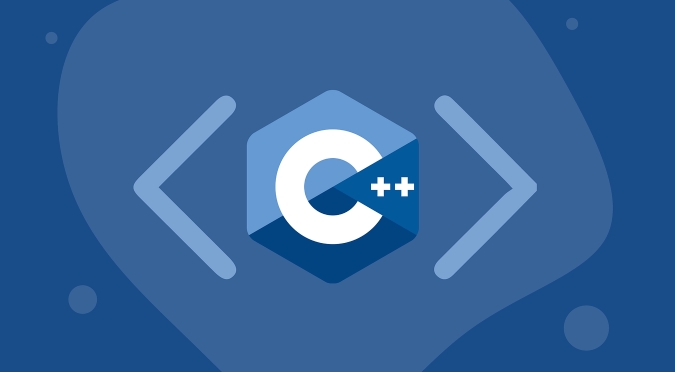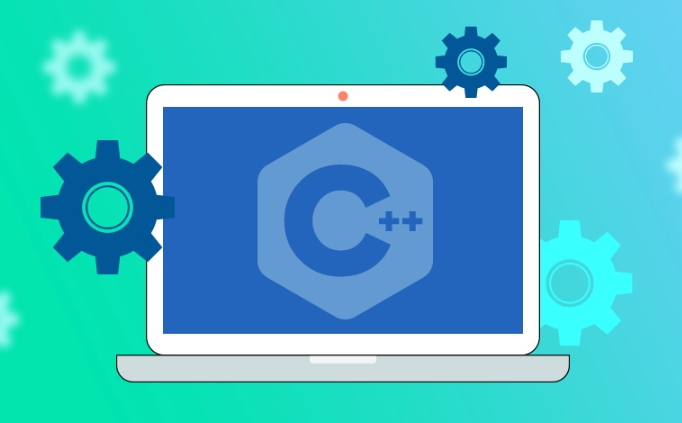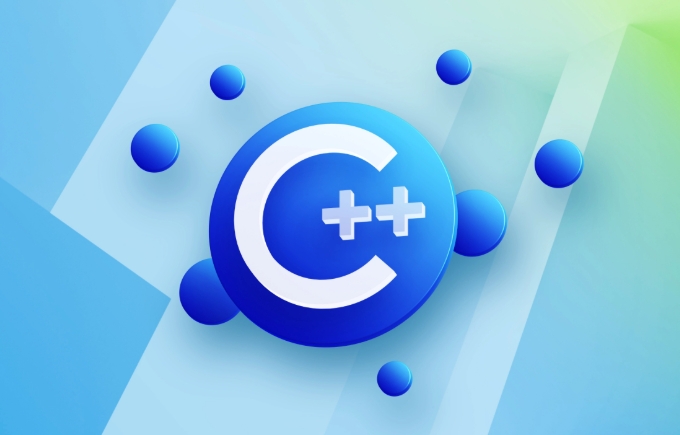In C, the main difference between i and i is the timing and performance impact of return value. 1. i is the prefix self-increase, first self-increase, then return the value after self-increase; 2. i is the suffix self-increase, first return to the original value and then increase. Both are usually optimized by the compiler in terms of basic types, but on complex types such as iterators, i may affect efficiency due to the creation of temporary objects. Therefore, it is recommended to use i when you don't care about the return value, especially in performance-sensitive paths or STL iterator operations to use prefixes. Also, avoid modifying the same variable multiple times in a single expression to prevent undefined behavior.

In C, although i (prefix self-increase) and i (suffix self-increase) ultimately add the value of variable i to 1, their behavior is different from the usage scenario. Understanding this is helpful for writing efficient, clear code.

When to use i and when to use i ?
If you only care about the variable itself being eventually added by 1, and not the return value of the expression, the two seem to be interchangeable. However, in actual development, it is more recommended to use i first , especially on loops or performance-sensitive code paths.

Why? Because semantically, i needs to preserve the original value as the result of the expression, which means it may produce a temporary copy. i directly returns the value after increasing, without additional overhead. Although modern compilers will optimize, this difference still exists on some types (such as iterators).
How to choose in a loop?
In common for loops, both writing methods are common:

for (int i = 0; i < 10; i ) { ... } for (int i = 0; i < 10; i) { ... } In fact, for basic types (such as int ), these two writing methods are almost indistinguishable from modern compilers. But if you are using an iterator when iterating through the container:
for (auto it = vec.begin(); it != vec.end(); it) { ... } It is recommended to use it here because there may be performance differences in the iterator type's auto-increment operation, especially in some implementations it will create temporary objects, which will affect efficiency.
Differences in return value behavior
This is the most core difference between the two:
-
i: First self-increase, then return the value after self-increase (reference or value) -
i: Save the original value first, then increment it, and finally return the original value (usually a temporary copy)
To give a simple example:
int i = 5; int a = i; // a = 6, i = 6 int j = 5; int b = j ; // b = 5, j = 6
It can be seen that the same is adding 1, but the assignment result is different. Therefore, when there is a dependency in the return value in the expression, pay special attention to which one to choose.
A few tips for practical use
- If you don't care about the return value of the expression, use
ito get used to uniformity and avoid potential performance problems. - In the iterator operation of the STL container, try to use the prefix form.
- Do not modify the same variable multiple times in an expression when writing code, such as
int c = ii;which will cause undefined behavior. - When you encounter similar writing styles when reading other people's codes, don't take it for granted that the order is clear and pay more attention to the context logic.
Basically that's it. These two operators look similar, but are handled well in details, making the code clearer and more efficient.
The above is the detailed content of C pre-increment ( i) vs post-increment (i ). For more information, please follow other related articles on the PHP Chinese website!

Hot AI Tools

Undress AI Tool
Undress images for free

Undresser.AI Undress
AI-powered app for creating realistic nude photos

AI Clothes Remover
Online AI tool for removing clothes from photos.

Clothoff.io
AI clothes remover

Video Face Swap
Swap faces in any video effortlessly with our completely free AI face swap tool!

Hot Article

Hot Tools

Notepad++7.3.1
Easy-to-use and free code editor

SublimeText3 Chinese version
Chinese version, very easy to use

Zend Studio 13.0.1
Powerful PHP integrated development environment

Dreamweaver CS6
Visual web development tools

SublimeText3 Mac version
God-level code editing software (SublimeText3)

Hot Topics
 C Destructors code samples
Jun 13, 2025 am 12:04 AM
C Destructors code samples
Jun 13, 2025 am 12:04 AM
The destructor in C is used to free the resources occupied by the object. 1) They are automatically called at the end of the object's life cycle, such as leaving scope or using delete. 2) Resource management, exception security and performance optimization should be considered during design. 3) Avoid throwing exceptions in the destructor and use RAII mode to ensure resource release. 4) Define a virtual destructor in the base class to ensure that the derived class objects are properly destroyed. 5) Performance optimization can be achieved through object pools or smart pointers. 6) Keep the destructor thread safe and concise, and focus on resource release.
 C Polymorphism : is function overloading a kind of polymorphism?
Jun 20, 2025 am 12:05 AM
C Polymorphism : is function overloading a kind of polymorphism?
Jun 20, 2025 am 12:05 AM
Yes, function overloading is a polymorphic form in C, specifically compile-time polymorphism. 1. Function overload allows multiple functions with the same name but different parameter lists. 2. The compiler decides which function to call at compile time based on the provided parameters. 3. Unlike runtime polymorphism, function overloading has no extra overhead at runtime, and is simple to implement but less flexible.
 What Are the Different Kinds of Polymorphism in C ? Explained
Jun 20, 2025 am 12:08 AM
What Are the Different Kinds of Polymorphism in C ? Explained
Jun 20, 2025 am 12:08 AM
C has two main polymorphic types: compile-time polymorphism and run-time polymorphism. 1. Compilation-time polymorphism is implemented through function overloading and templates, providing high efficiency but may lead to code bloating. 2. Runtime polymorphism is implemented through virtual functions and inheritance, providing flexibility but performance overhead.
 How to Implement Polymorphism in C : A Step-by-Step Tutorial
Jun 14, 2025 am 12:02 AM
How to Implement Polymorphism in C : A Step-by-Step Tutorial
Jun 14, 2025 am 12:02 AM
Implementing polymorphism in C can be achieved through the following steps: 1) use inheritance and virtual functions, 2) define a base class containing virtual functions, 3) rewrite these virtual functions by derived classes, and 4) call these functions using base class pointers or references. Polymorphism allows different types of objects to be treated as objects of the same basis type, thereby improving code flexibility and maintainability.
 C Destructors: Common Errors
Jun 20, 2025 am 12:12 AM
C Destructors: Common Errors
Jun 20, 2025 am 12:12 AM
C destructorscanleadtoseveralcommonerrors.Toavoidthem:1)Preventdoubledeletionbysettingpointerstonullptrorusingsmartpointers.2)Handleexceptionsindestructorsbycatchingandloggingthem.3)Usevirtualdestructorsinbaseclassesforproperpolymorphicdestruction.4
 C : Is Polymorphism really useful?
Jun 20, 2025 am 12:01 AM
C : Is Polymorphism really useful?
Jun 20, 2025 am 12:01 AM
Yes, polymorphisms in C are very useful. 1) It provides flexibility to allow easy addition of new types; 2) promotes code reuse and reduces duplication; 3) simplifies maintenance, making the code easier to expand and adapt to changes. Despite performance and memory management challenges, its advantages are particularly significant in complex systems.
 Polymorphism in C : A Comprehensive Guide with Examples
Jun 21, 2025 am 12:11 AM
Polymorphism in C : A Comprehensive Guide with Examples
Jun 21, 2025 am 12:11 AM
Polymorphisms in C are divided into runtime polymorphisms and compile-time polymorphisms. 1. Runtime polymorphism is implemented through virtual functions, allowing the correct method to be called dynamically at runtime. 2. Compilation-time polymorphism is implemented through function overloading and templates, providing higher performance and flexibility.
 What Are the Various Forms of Polymorphism in C ?
Jun 20, 2025 am 12:21 AM
What Are the Various Forms of Polymorphism in C ?
Jun 20, 2025 am 12:21 AM
C polymorphismincludescompile-time,runtime,andtemplatepolymorphism.1)Compile-timepolymorphismusesfunctionandoperatoroverloadingforefficiency.2)Runtimepolymorphismemploysvirtualfunctionsforflexibility.3)Templatepolymorphismenablesgenericprogrammingfo






